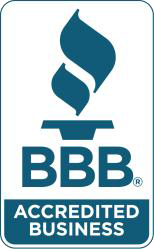
Is your hearing protection failing to safeguard your hearing? Look out for these three things.
Whether you’re at work or at home, sometimes you encounter something that can impede the performance of your hearing protection. That’s hard to cope with. After all, you’re striving to do what you’re supposed to do! You wear your earmuffs every day while working; you wear earplugs when you go to a concert; and you avoid your loud Uncle Joe who is always shouting in your ears (although, perhaps you just don’t really enjoy Uncle Joe).
The point is, it can be rather aggravating when you’re doing everything right and still there are challenges. The good thing is that once you understand a few of these simple problems that can interfere with your hearing protection, you can better prepare yourself. And this will keep your hearing protection working effectively even when you’re having a bit of difficulty.
1. Using The Wrong Kind of Hearing Protection
Hearing protection comes in two basic forms: earplugs and earmuffs. As the names may suggest, earplugs are small and can be pushed directly into the ear canal. Earmuffs look like a pair of 70’s headphones, but instead of tunes, they offer protection for your ears by blocking external sound.
- When you’re in a setting where sound is relatively constant, earplugs are suggested.
- When loud sounds are more sporadic, earmuffs are recommended.
There’s a simple reason for that: when it’s quiet, you’ll want to remove you’re hearing protection which is more difficult to do with earplugs than earmuffs. Earplugs are extremely easy to misplace (especially if they’re inexpensive and disposable anyway), so you don’t want to be in a scenario where you remove an earplug, misplace it, and then need it later.
Wear the correct form of hearing protection in the right situation and you should be okay.
2. Your Anatomy Can Impact Your Ear Protection
Human anatomy is extremely varied. That’s why your Uncle Joe has such large vocal cords and you have more normal-sized vocal cords. That’s also why you might have a smaller than normal ear canal.
And that can mess with your hearing protection. Disposable hearing protection is often a one size fits all mindset, or at best, a small, medium, large situation. And so if you have particularly tiny ear canals, you might have a difficult time making earplugs fit, causing you to give up completely and throw the earplugs away in frustration.
If you find yourself in this situation, you may forsake the hearing protection you were trying to give yourself, leaving you at risk of hearing damage. Another instance of this is individuals with large ears who often have a tough time getting earmuffs to fit comfortably. If you’re in a noisy setting regularly, it might be worth investing in custom ear protection tailored to your ears.
3. Check if There’s Any Wear And Tear on Your Hearing Protection
You should be commended if you manage to wear your hearing protection regularly. But day-to-day usage will cause wear and tear to your hearing protection which you need to keep an eye on.
- Your hearing protection should be kept clean. Earwax serves a practical function in your body but it can also accumulate on your hearing protection. Just make certain that you wash properly; if you’re cleaning a set of earmuffs, take apart the earmuffs. Be mindful not to drop your earplugs down the drain.
- When they’re no longer pliable, replace the cushions on your earmuffs.
- If you use earmuffs, examine the band. The band will need to be changed if the elastic is worn out and no longer holds the earmuffs tight.
Making sure you do regular maintenance on your hearing protection is essential if you want to continue benefiting from that protection. If you have any questions or how to do that, or how to make sure you’re prepared for things that can hinder your hearing protection, it’s a good idea to have a frank discussion with a highly qualified hearing professional.
Your hearing is vital. It’s worth taking the time to protect it right.
The content of this blog is the intellectual property of MedPB.com and is reprinted here with permission.
The site information is for educational and informational purposes only and does not constitute medical advice. To receive a personalized free hearing test and hearing loss consultation, call today to set up an appointment.









